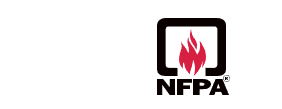When it comes to industrial safety, flame retardant fabrics play a critical role in protecting workers from life-threatening flash fire hazards. Among the key standards that ensure garment safety and performance is NFPA 2112, which outlines rigorous testing and certification requirements. In this article, we’ll break down what NFPA 2112 means, how testing is done using ASTM F1930 and ASTM D6413, and why these standards matter for FR clothing buyers.
What Is NFPA 2112?
NFPA 2112 is the Standard on Flame-Resistant Clothing for Protection of Industrial Personnel Against Short-Duration Thermal Exposures from Fire, published by the National Fire Protection Association. It provides minimum performance criteria and test methods to ensure that flame resistant garments offer reliable protection in flash fire scenarios.
ASTM F1930: Manikin Test for Body Burn Prediction
The ASTM F1930 test uses an instrumented manikin to evaluate how flame retardant garments perform under flash fire conditions. NFPA 2112 requires garments to undergo a 3-second exposure to fire at 2 cal/cm², with a maximum allowable 50% total predicted body burn.
Why 3 seconds?
It’s the upper limit of most real-world flash fires.
It provides the most accurate performance differentiation between different FR fabrics.
Pro Tip: Garments must be size 42-RG coveralls and tested over a 100% cotton t-shirt and briefs to standardize results.
SAFE-GUARD, for instance, classifies garments as “Flash Fire Rated” if they meet this <50% burn in 3 seconds requirement.
ASTM D6413: Vertical Flame Test
This method evaluates flame resistance by measuring:
Afterflame time (≤2 seconds)
Char length (≤4.0 inches)
No melting or dripping allowed
Even after 25 washes, the fabric must maintain performance.
Note: While NFPA 2112 caps char length at 4 inches, ASTM F1506 allows up to 6 inches. However, shorter char length doesn’t always mean better protection. Fabrics with similar char lengths can show very different burn percentages in the manikin test. That’s why ASTM F1930 is the more reliable predictor of thermal protective performance.
Labeling and Certification
To be labeled NFPA 2112 compliant, garments must:
Include a permanent product label
Be UL certified or certified by an equivalent body
Display the certification mark next to or on the garment label
This ensures the end-user is purchasing a product that truly meets safety standards.
Summary: What NFPA 2112 Requires
√Manikin Test (ASTM F1930): <50% predicted body burn
√Flame Resistance (ASTM D6413): Max 4-inch char length
√No melt/drip, ≤2s afterflame
√Heat and thermal shrinkage resistance
√17 test methods total (4 pass/fail, 13 report-only)
√Certified by UL with appropriate labeling
Why This Matters for You
Choosing flame retardant clothing that meets NFPA 2112 means ensuring a higher level of safety and compliance in hazardous work environments. Whether you’re purchasing for oil & gas, electrical utilities, or chemical processing industries, understanding these standards empowers better, safer buying decisions.
Need help finding certified FR Fabric that meets NFPA 2112 standards? Contact us today or browse our flame retardant clothing collections!
Specific can enter the official query related content:NPFA



